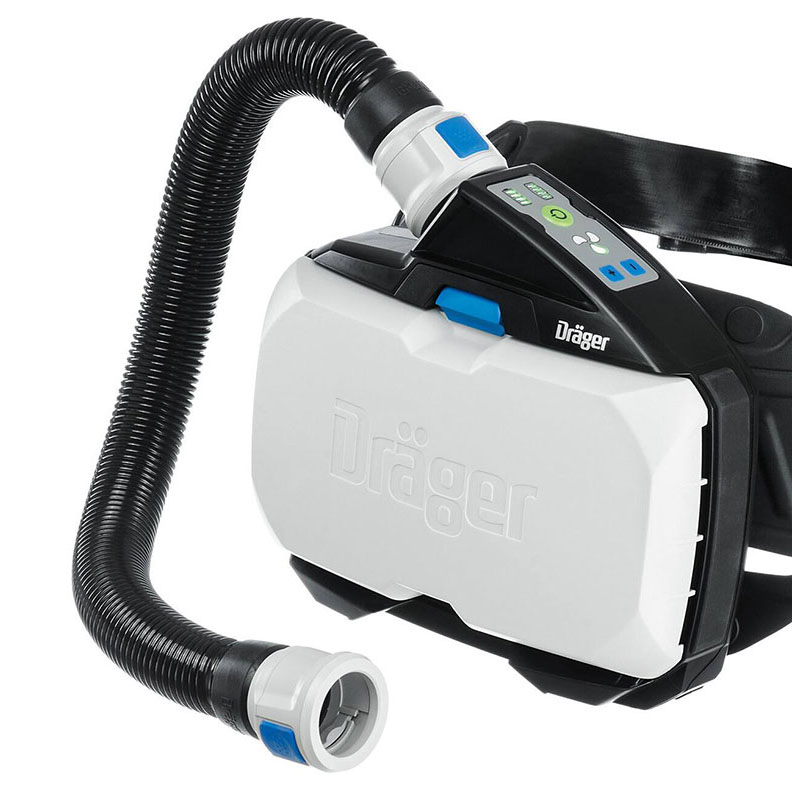When the atmosphere you are working in is potentially combustible, it is vital that your respiratory equipment is intrinsically safe, to prevent explosion.
An
ATEX zone denotes a hazard in any situation where the mix of the air and dangerous substances, either gas, vapour, mist or dust, raises the likelihood of any energy source detonating an explosion. The
ATEX zone rating will denote the level of risk and what respiratory protection is necessary.
| ATEX Zones Explained: Gases, Vapours and Mists
|
| Zone 0
| Explosive air/substrate combination present continuously/for long periods/frequently
|
| Zone 1
| Explosive air/substrate occurs occasionally during normal operations
|
| Zone 2
| Explosive air/substrate unlikely to occur during normal operations, and if it does, only for a short time
|
| ATEX Zones Explained: Dusts
|
| Zone 20
| Combustible dust cloud present continually / for long periods / frequently
|
| Zone 21
| Combustible dust cloud occurs occasionally during normal operations
|
| Zone 22
| Combustible dust cloud unlikely to occur during normal operations, and if it does, only for a short time
|
But this hazard raises a potential conundrum – how do you protect the lung health of your workers from the very real risks of occupational lung disease in these areas? The pollutants present may mean that a powered air respiratory system (PAPR) is necessary, but electrical equipment can be a potentially lethal source of sparks and heat. It is essential to prevent any possibility of atmospheric ignition.
The answer is using respiratory protection equipment that is
‘Intrinsically Safe’
This means using devices that are specifically designed to be incapable of producing heat or sparks sufficient to ignite an explosive atmosphere, even if the device is damaged. Intrinsically safe respiratory equipment is given an ATEX rating to align to the zone in which it is designed for use.
Choosing your intrinsically safe respiratory ATEX equipment
To evaluate the explosion risk level and gauge the conditions of use, an assessment of the hazardous work environment is necessary, to define:
- oxygen levels
- type of pollutants and toxicity
- worst case scenario concentrations of those pollutants
- occupational exposure limits / permissible concentrations
- dimensions of particles in the case of aerosols
- level of physical activity of the user
- duration of exposure
- related risks – i.e. protection from fluids / fire etc.
- physical characteristics of workers (i.e. facial hair)
- visibility requirements
This assessment will allow you to configure the respiratory equipment necessary to ensure the correct level of explosion precautions, compliance and protection. Whether you require full face masks or hoods and what type of filters you need will be determined by the outcome.
Removing Complication
A full assessment as described may seem a complicated process, but to make your life quicker, easier and safer, Anchor Safety respiratory specialists have put together ready-to-go kits: intrinsically safe equipment which will protect your workers and offer explosion protection in the most extreme hazard conditions.

The rugged Drager X-Plore 8000 heavy duty blower unit is designed to be intrinsically safe and can be used in hazardous environments, ATEX rated 1,2,21 and 22. The design uses high ingress protection (IP65) from dust and water jets in any direction, while air inlets are protected from frontal moving debris ensuring that sparks do not come into direct contact with the filter.
.png)
Our intrinsically safe, ready to use Drager Ready Packs include everything you need to start using the system straight away. All our Drager Ready Packs are tough enough for use in demanding environments, the system ensures your safety at the same time as being comfortable enough to allow you to get on with the job at hand.
View our intrinsically safe respiratory protection kits now.
ATEX Rated Drager RPE Ready Packs
If you have any questions about protecting your workers with intrinsically safe respiratory ATEX equipment then call our respiratory specialists now, on 0800 328 5028.